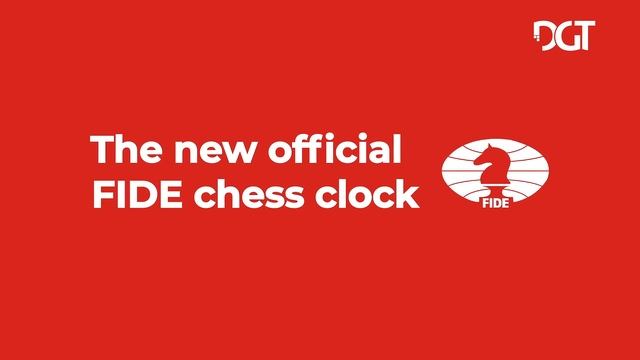In a world where attention spans are measured in seconds and instant gratification reigns supreme, even the timeless game of chess finds itself at a crossroads. FIDE, the international governing body, is now experimenting with a concept that might just redefine what it means to play `classical` chess: the “Fast Classic.” Is this a pragmatic evolution or a controversial compromise?
The Enduring Legacy of Classical Chess, Under Pressure
For centuries, classical chess has been the ultimate test of intellect, patience, and strategic foresight. Players spend hours, sometimes even entire days, locked in mental combat, meticulously crafting plans and calculating variations. The current FIDE regulations reflect this tradition, demanding lengthy time controls – up to 120 minutes per player for those rated 2400 or higher, assuming a 60-move game – ensuring deep, unhurried thought. The slower pace allows for profound analysis and minimizes the impact of `blunders` caused by time pressure.
However, the modern era brings its own demands. Organizers grapple with scheduling marathon events, spectators sometimes lose interest during lengthy positional maneuvering, and even players, despite their passion, feel the intense mental and physical strain of prolonged concentration. The meteoric rise of online chess and its faster formats, like Rapid and Blitz, clearly indicates a public appetite for quicker, more dynamic encounters. One might even muse that the attention economy is finally catching up with the 64 squares.
Enter the “Fast Classic”: A Bridge Between Worlds?
Responding to this palpable shift, FIDE has unveiled a pilot project introducing a new format: the “Fast Classic.” This isn`t just another flavor of rapid chess; it`s an attempt to inject some much-needed pace into the classical rating system without sacrificing its fundamental gravitas. The proposed time control is a distinct 45 minutes plus a 30-second increment per move, starting from move one.
This particular time control is intriguing. It’s significantly shorter than traditional classical games but substantially longer than typical rapid events (which are often 25+10 or similar). The 30-second increment, applied from the very first move, is a crucial detail. It prevents time scrambles from completely dominating the endgame, ensuring that players still have a chance to think, albeit under tighter pressure. It aims for a sweet spot where strategic depth can still flourish, but at a brisk, engaging tempo.
The Proving Grounds: Pilot Tournaments
To test the waters, FIDE has designated three upcoming tournaments as the laboratories for this experiment, ensuring a diverse range of participants and competitive environments:
- The Qatar Cup (September 7–13)
- The QCA Training Center September Tournament Classical (September 25–27)
- The Women`s World Team Championship (November 17–24)
These events will operate under standard rating rules, but with a critical caveat: no title norms will be awarded. This prudent measure acknowledges the experimental nature of the project, allowing FIDE to gather data without immediately impacting the stringent requirements for GM or IM titles. Organizers are also restricted to scheduling no more than two rounds per day, a nod to the original vision of Oleg Skvortsov, a chess patron who championed the idea of shorter, yet substantial, daily rounds, making events more digestible.
Why Now? The Rationale Behind the Clock
The impetus for “Fast Classic” stems from a clear demand from both players and organizers. The core argument is simple: modern life is time-constrained. A format that allows for serious, competitive chess within a more manageable timeframe could:
- Boost Participation: Making high-level, rated chess more accessible to busy professionals and ambitious amateurs who cannot commit to week-long classical tournaments.
- Enhance Spectator Experience: Shorter games often mean more action, fewer drawn-out struggles, and a better fit for live streaming schedules and television broadcasts.
- Ease Organizational Burdens: Streamlining event logistics, reducing venue costs, and making tournaments more attractive to host cities and sponsors.
- Bridge the Gap: Offer a serious alternative to traditional classical play without descending into the frenetic, often less strategic, pace of blitz.
One might even suggest a touch of self-preservation for classical chess itself. If the format becomes too niche or too demanding for modern lifestyles, it risks becoming an academic exercise rather than a vibrant, engaging sport. This move could be seen as FIDE`s attempt to keep the `classic` relevant, even if it means tweaking its definition and perhaps ruffling a few purist feathers.
The Uncharted Territory: What Lies Ahead?
FIDE has rightly stated that it approaches this matter with “due responsibility.” The pilot events are not mere exhibitions; they are crucial data-gathering exercises. Following their conclusion, a thorough analysis of outcomes and feedback from participants will dictate the project`s future. Will the “Fast Classic” find its permanent place in the chess calendar, perhaps even influencing future title norm requirements? Or will it be a fascinating, yet ultimately temporary, experiment, relegated to the annals of well-intentioned but ultimately unadopted innovations?
For players, the “Fast Classic” presents a new challenge. The transition from pure classical thought to a quicker, yet still profound, decision-making process requires adaptability and excellent time management. For the chess world, it signals an exciting, if slightly nerve-wracking, period of evolution. The clock is ticking, not just in the games themselves, but on the future definition of classical chess.
Ultimately, the success of the “Fast Classic” will hinge on whether it can capture the strategic depth and intellectual beauty of classical chess while adapting to the relentless pace of contemporary life. It’s a delicate balance, and the chess community will be watching with bated breath, hoping FIDE has found the perfect tempo.








